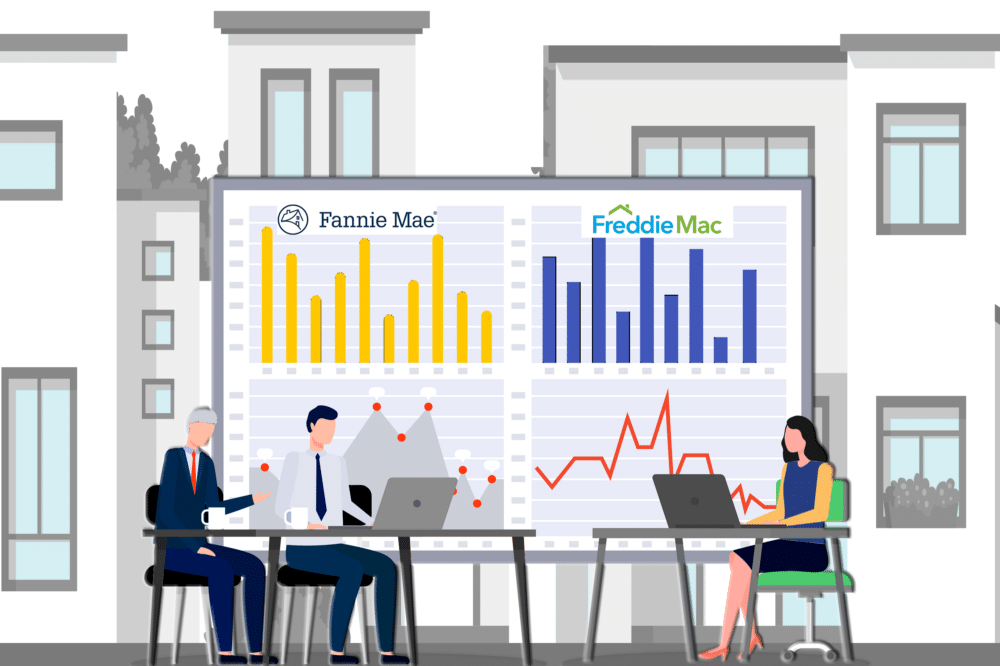
Commercial real estate continues to receive front-page coverage with its wave of loan maturities and gloomy lending conditions. But in the multifamily sector, there are other critically important specifics for investors. And perhaps surprisingly, our on-the-ground observations on the lending environment may come as a surprise.
1. Fannie Mae and Freddie Mac are making a big difference in multifamily.
In the multifamily market, debt conditions are improving. Fannie Mae and Freddie Mac are major players in multifamily loans, and their loans are based on Treasury bonds, not SOFR. Treasury yields continue to decrease from peak levels, so it’s now possible to get ~5% debt. If you’re able to get your hands on an asset with a 5.5% to 5.8% cap rate and get 5% debt, then you’ll have nice cash flow out of the gates, see some rent growth over the next five years, and exit caps will probably drop—in all, you’ll likely do great. That’s how we’re seeing the world right now, and we actually have a couple of deals under contract.
Fannie and Freddie also make an important impact amid the regional banking challenges. When the stocks of regional banks come under extreme pressure, their capital ratios are affected, which impacts their ability to lend. This is bad news for commercial real estate sponsors? The deals don’t pencil without leverage. Mid-size, high-growth real estate sponsors like us certainly benefit from having a vibrant, thriving regional bank sector. But regional banks aren’t the only game in town for multifamily sponsors. We’re fortunate to also have Fannie and Freddie as active lenders.
2. Leverage is looking good as LTV trends up.
Loan-to-value (LTV) ratios plummeted in previous quarters, but now with Treasury yields coming down and cap rates continuing to stay high, sponsors can achieve pretty good leverage. Several factors affect LTV, including interest rates, net operating income (NOI), and asset values. If your NOI and asset value are flat but your interest rates go down, then your LTV goes up.
3. On the equity side, fear still dominates.
Equity conditions continue to be tight, perhaps tighter than truly warranted. In our view, the rate hiking cycle is pretty much done. If equity investors were going to be scared, the time to be scared would have been 400 basis points ago—not right now, when much of the dynamic in rates has been already priced in. As the old saying goes, bull markets are driven by greed while bear markets are driven by fear—and it feels like peak fear right now.
We think equity investors will likely come off the sidelines in Q4, triggered by a continued decline in Treasury yields, easing inflation, and growing confidence that rate hikes are done.
4. We anticipate some forced sellers in multifamily—but no one will be drinking from a firehose of distressed deals like we saw during financial crisis.
We went through an 18- to 24-month period of people basically buying at the lowest cap rates in history. Many, less-experienced sponsors took on some high-octane debt, some of which was floating or uncapped. So, there’s going to be some pain out there. Those people are going to have refi’s and expiring rate caps, and they’re probably short on liquidity. We expect to see a limited number of forced sales and some sponsors won’t make it to see the next cycle.
While this environment is nothing like the global financial crisis—which had investors drinking from a firehose of heavily distressed deals—it will absolutely create opportunities for us. Our focus is always value-add multifamily. “Blank canvas” is our favorite category, where the building has had the same owner for 10+ years. There may also be opportunities with ground-up developers who want to cash out, avoid buying another rate cap, or get out of their construction loan.

